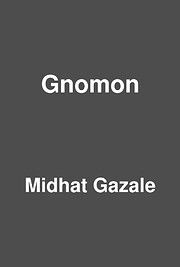

Fai clic su di un'immagine per andare a Google Ricerca Libri.
|
Sto caricando le informazioni... Gnomondi Midhat Gazale
 Nessuno Sto caricando le informazioni...
Iscriviti per consentire a LibraryThing di scoprire se ti piacerà questo libro. Attualmente non vi sono conversazioni su questo libro. Nessuna recensione nessuna recensione | aggiungi una recensione
Premi e riconoscimenti
The beaver's tooth and the tiger's claw. Sunflowers and seashells. Fractals, Fibonacci sequences, and logarithmic spirals. These diverse forms of nature and mathematics are united by a common factor: all involve self-repeating shapes, or gnomons. Almost two thousand years ago, Hero of Alexandria defined the gnomon as that form which, when added to some form, results in a new form, similar to the original. In a spiral seashell, for example, we see that each new section of growth (the gnomon) resembles its predecessor and maintains the shell's overall shape. Inspired by Hero, Midhat Gazalé--a fellow native of Alexandria--explains the properties of gnomons, traces their long and colorful history in human thought, and explores the mathematical and geometrical marvels they make possible. Gazalé is a man of wide-ranging interests and accomplishments. He is a mathematician and engineer who teaches at the University of Paris and whose business career lifted him to the Presidency of AT&T-France. He has a passion for numbers that is clear on every page, as he combines elegant mathematical explanations with compelling anecdotes and a rich variety of illustrations. He begins by explaining the basic properties of gnomons and tracing the term--which originally meant "that which allows one to know"--to ancient Egyptian and Greek timekeeping. Gazalé examines figurate numbers, which inspired the Greek notions of gnomon and number similarity. He introduces us to continued fractions and guides us through the intricacies of Fibonacci sequences, ladder networks, whorled figures, the famous "golden number," logarithmic spirals, and fractals. Along the way, he draws our attention to a host of intriguing and eccentric concepts, shapes, and numbers, from a complex geometric game invented by the nineteenth-century mathematician William Hamilton to a peculiar triangular shape that Gazalé terms the "winkle." Throughout, the book brims with original observations and research, from the presentation of a cousin of the "golden rectangle" that Gazalé calls the "silver pentagon" to the introduction of various new fractal figures and the coining of the term "gnomonicity" for the concept of self-similarity. This is an erudite, engaging, and beautifully produced work that will appeal to anyone interested in the wonders of geometry and mathematics, as well as to enthusiasts of mathematical puzzles and recreations. Non sono state trovate descrizioni di biblioteche |
Discussioni correntiNessunoCopertine popolariNessuno
 Google Books — Sto caricando le informazioni... Google Books — Sto caricando le informazioni...GeneriSistema Decimale Melvil (DDC)516.2Natural sciences and mathematics Mathematics Geometry Euclidean geometryClassificazione LCVotoMedia: (4) (4)
Sei tu?Diventa un autore di LibraryThing. |
||||||||||||||||||||||||||||||||||||||||||||||||||||||||||||||||||||||||||||||||||||||||||||||||||||||||||||||||||||||||